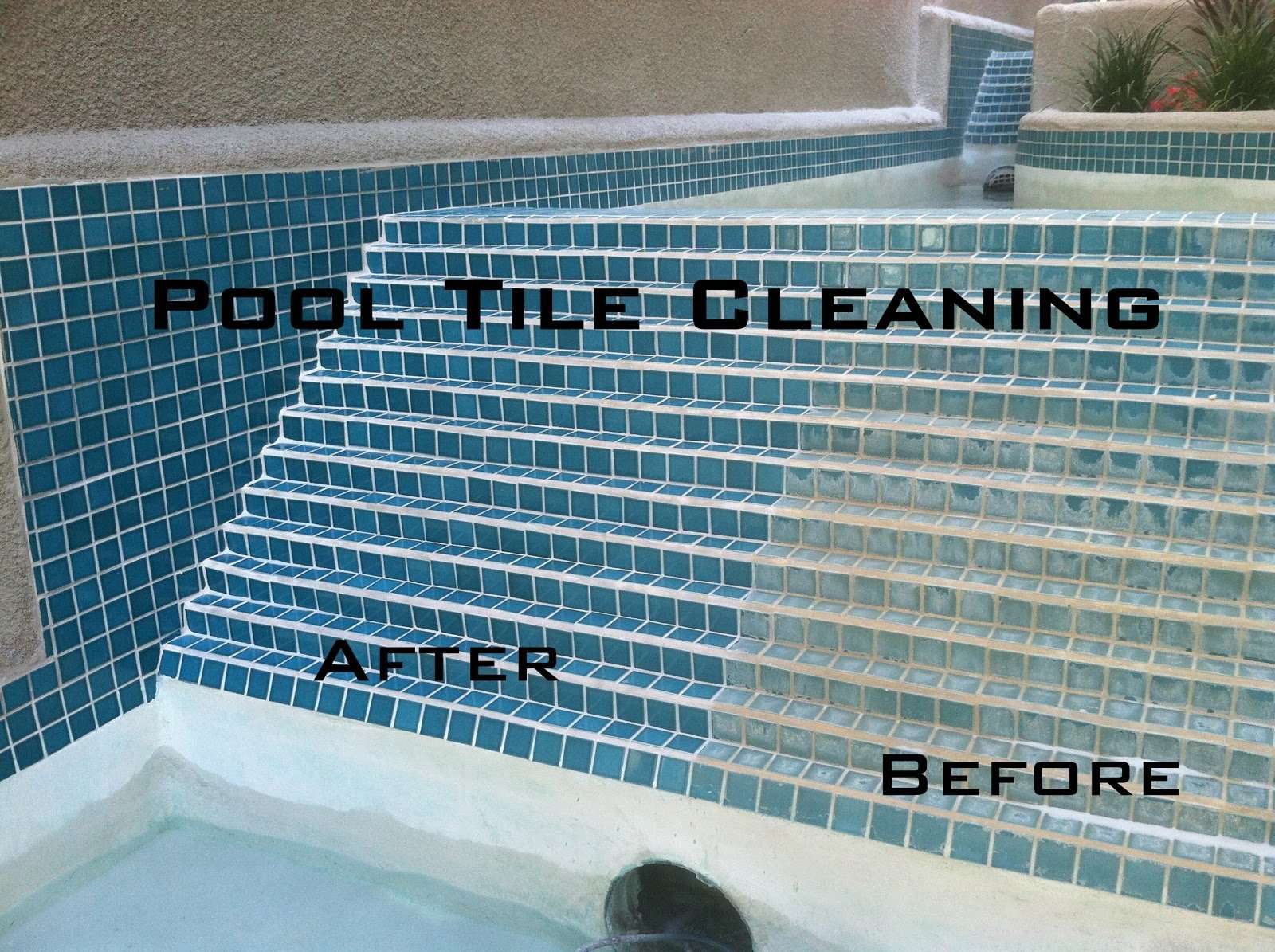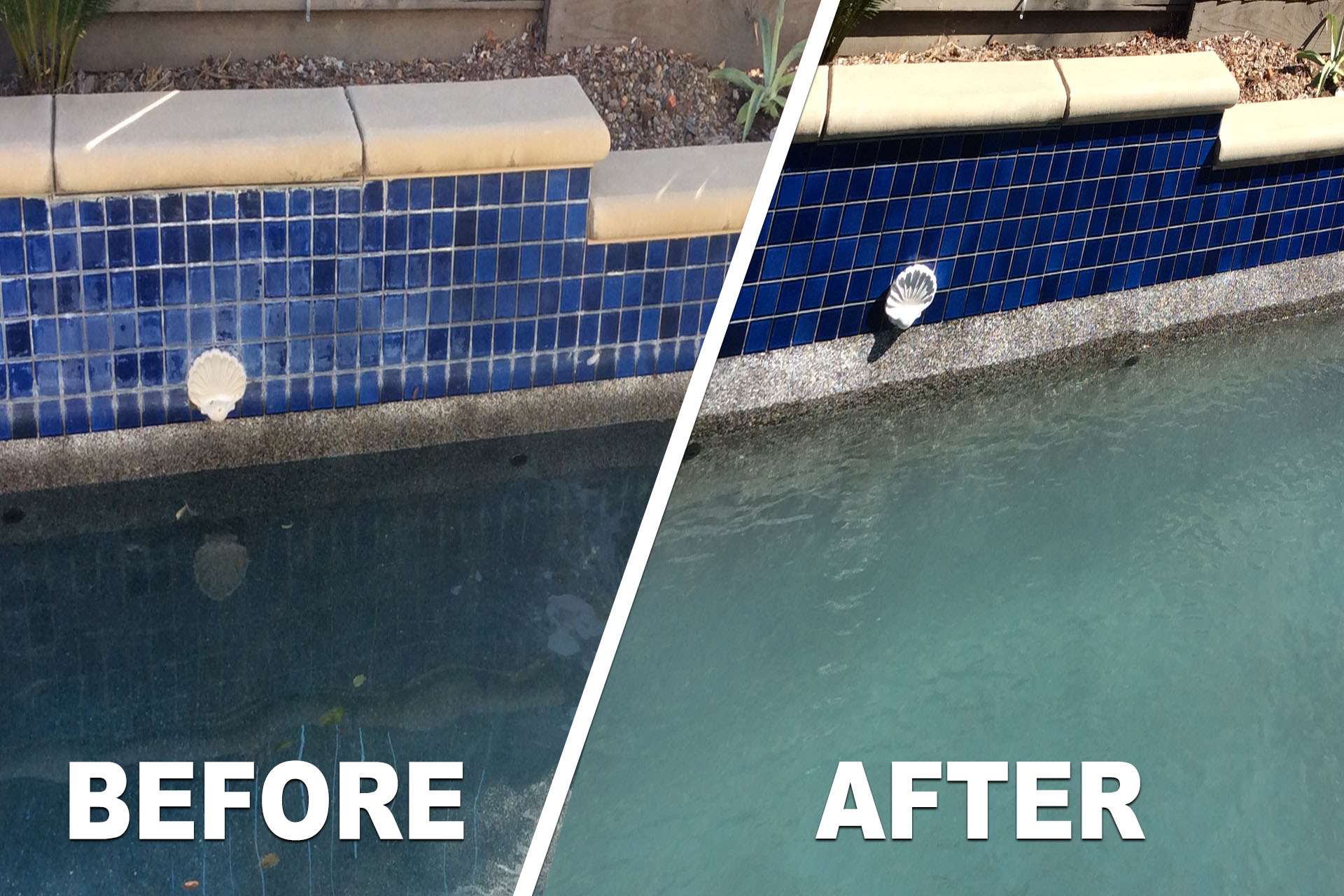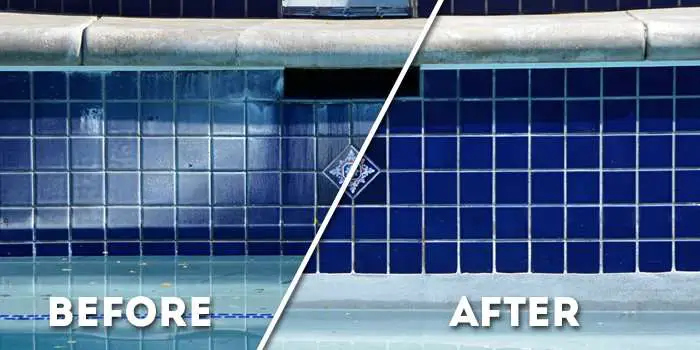How To Fix Tiled Swimming Pool Leaks
30 October, 2009
A swimming pool is a valuable addition to any home, especially if it is lined with well-crafted tile. Whether made from ceramics, stone or even glass, swimming pool tile adds not only monetary value but also an unmatched aesthetic quality. General upkeep of tiled swimming pools is no different than pools built with other materials. One upkeep concern for pool owners is a leaking pool. A leaking tiled swimming pool can be easily fixed with the proper sealing materials. Sealing materials vary in brand and price, but most will work effectively and quickly to fix your leaking tile.
The Best Methods For Cleaning Pool Tiles
It’s been a scorching summer, and you are having an end of summer party . You walk outside to make sure the pool looks good, and you find white calcium build-up all over your tiles. It’s Wednesday and the party is Saturday. You call your pool company and they can’t get there until Monday. No problem. You run to your local pool store to grab a case of muriatic acid, a pumice stone, wire brush, and figure with a little elbow grease you can do it yourself. After 2 days, you have gotten 60% of it finished , but now realize you need something better. What to do?
First, let me explain that calcium build-up on your tile can be a result of hard water, or high calcium in the water. Have your pool company check the calcium and TDS levels, as well as the water coming from your faucet.
Second, let me say that while muriatic acid, pumice stones and wire brushes will help in the removal of some calcium, it definitely isn’t the best. Trust me on this one…
That being said, at a cost of between $5.25-6 per linear foot, there is a much better, in fact the best, and quickest way to get the tiles so clean that you might just think you had the tiles replaced with brand new sparkling ones.
The 3 best methods I have found are glass bead blasting, salt blasting, and soda blasting. They use high output, low pressure stream to clean the tiles.
Companies like North Texas Tile Savers specialize in this type of pool tile cleaning in the DFW area.
How Long Does Swimming Pool Tile Last
With proper maintenance, swimming pool tile can last decades. You can help ensure a long lifespan by keeping your pool tile clean and staying on top of maintenance and repairs. And, of course, make sure that you choose tile that was manufactured specifically for swimming pools! If you use regular indoor tile, it may need to be replaced within a few years.
Read Also: How To Keep Spiders Out Of Pool
Clean Tile = Clean Pool
To keep your pool tile buildup-free, you should establish a good pool maintenance regimen that includes testing your waters pH and alkalinity levels and brushing your pool tile regularly.
Dont Forget the Grout!
The grout between your swimming pool tiles can be prone to algae growth. To remove algae, start by scrubbing the grout with a stiff brush. Once youve scrubbed the grout clean, rub it with a chlorine tablet. Finally, shock your pool to prevent regrowth.
Cleaning Pool Tile With Baking Soda A Diy Solution

Pool Team
Pool tiles can greatly affect how a pool looks, but they can develop a tarnished look as a result of calcium build up. It goes without saying that you have to ensure that the pool tiles are clean to keep up with its appearance. Tile cleaning also increases the lifetime of your pool. Below are some ways that you can clean your pool tile with basic items that you may already have in your home such as cleaning pool tile with baking soda, vinegar, or a pumice stone.
Don’t Miss: Iron In Pool
Cleaning Pool Tiles: A Step By Step Guide
Too long to read? Enter your email to download this post as a PDF.We will also send you our best business tips every 2 weeks in our newsletter.You can unsubscribe anytime.
You have built your desired wonderful pool with beautiful pool tiles. However, with time the tiles may get dirty, and you need to get them cleaned to regain the regal beauty. As the pool tiles are always exposed to water, pool tiles cannot be cleaned like other normal tiles. They need some specialized cleaning materials and techniques. In this following article, We will go through the step-by-step procedure to clean your pool tiles.
Waterline Problems: Stains And Scale
The pools water line problems are either stains or scale.
If you notice stains or deposits caused by hard water in the bath tubs and kitchen sinks in your house, you are likely to also notice those same stains on the surface of the pool. When water evaporates, the calcium deposits remain on the sides of the pool and cause scale. It appears like difficult to remove gray or white scum. You will notice two types of pool scaling:
Pool staining can vary in color because of an imbalance in the chemical composition of the pool water.
Recommended Reading: Lice In Swimming Pool
It Is Important To Know How To Set Up The Machine For Best Results
Steam cleaning technology always delivers superior cleaning results. Make sure the machine is set up according to the manual and all the inlet, outlet, and accessories are connected and secured perfectly before you start the cleaning application.
Using a steam pressure washer to clean swimming pool tiles is a smart decision to make, as it cleans efficiently and faster too. Moreover, there is no need to add expensive chemicals and detergents to the cleaning process, as the power of steam can easily tackle all types of grime, dirt, and even bacterial and microbial presence. Top steam pressure washers come with a host of attachments and wands to reach hidden corners, making cleaning convenient and comprehensive.
Why Do Pool Tiles Get Dirty
It may seem a usual event for pool tiles to build up a layer of white scum on the side, just above the water level. Natural evaporation reduces the waterline and leaves it vulnerable to staining. Having high pH levels or high alkalinity as H2o evaporates causes Calcium to adhere along the path of the water’s edge, slowly going down. The ideal numbers are pH of 7.4 and alkalinity ranging between 80 and 120 PPM .
Also, an inadequate chemical imbalance of pool-water chemicals causes scales and stains to appear at the water’s edge. Thats why basic know-how of what and why pool water needs, so you stay away from problems.
On general occasion, it is scale or stain that cause discolouration, but so do falling leaves that stick to the sides.
Is all calcium build up the same? No.
You have two primary culprits:
Mind both and scrub tiles in time.
Read Also: Getting Iron Out Of Pool Water
Pressure Washing Pool Tiles
If you are a DIY’er when it comes to in-ground pool maintenance, renting a pressure washer may be a good option for you. This is the best way to clean a pool tile that is safe and chemical-free.
You need no detergents for pressure washing. Pressurised steam set at 2000 to 2600 PSI can remove built-up dirt, mould, and calcium deposits.
Eye And Skin Irritation
If people do continue to swim in a pool with the excess calcium that is causing the deposits, there is a strong chance that it will cause irritation to their skin and eyes.
The long and short of it is that calcium deposits and scaling look unappealing, make pools uncomfortable to swim in and can cause serious and expensive damage long term.
Knowing all that, why wouldnt you try to remove calcium buildup as quickly as possible?
Now, lets consider how to remove calcium from pool tile. Some materials and tactics which have proven to be effective include:
- Baking soda
- Vinegar
- Power washing
Lets focus on one of the most popular how to clean pool tile with vinegar as well as a few other options, depending on how much calcium buildup there is to remove.
Recommended Reading: Replace Pool Tile Without Draining
Types Of Dirt In The Waterline
The waterline of a pool is where the pool water meets the tile edge. It can get grimy and discolored over time. This can occur due to chemical imbalance or as a result of building organic materials. When the pool water evaporates, calcium salts can deposit to the side. Those deposits turn the tiles white-gray colored and harder to remove. These scaling can be of two types:
- Calcium Carbonate: These types of scaling appear as flaky white crusts on the surface. These are comparatively easy to remove. When exposed to muriatic acid, these will bubble up. A pumice stone or stain eraser can be used to remove such deposits.
- Calcium Silicate: These types of scaling appear as white-gray scum. It doesnt react with muriatic acid. Pumice stone with a whole lot of elbow grease can remove such stains.
Tips For Cleaning Your Pool Tiles

POSTED BY Dmitri Kara ON February 22, 2021 IN TIPS
A pool can be an inviting spot, but only when water is clear, tiles are free of mineral film, and theres no mould in sight.
Be it sparkling, modern mosaics to classic Spanish-style ceramics, with hygiene and cleaning your spa, pond, or pool tiles, the area at the waterline is most susceptible to stains. Thats where tiles meet air and thus trigger a chemical reaction that fungi, mineral build-ups and various discolouration agents simply love.
However, sometimes you should drain the entire pool to scrub tiles and thus keep tile-work healthy and free from additional maintenance. It is quite popular to tile only the water edging in in-ground pools, making the cleaning process much more manageable.
As professional tile and ground cleaners, at Pauls Cleaning Company we know that colleagues from the pool cleaning branch recommend draining, cleaning, and refilling an in-ground pool every 5-7 years unless a severe problem deems earlier attention.
Also Check: In Ground Pool Wall Repair
Option : Muriatic Acid
If vinegar or store-bought cleaning products dont work, the next step is to use a mixture of muriatic acid and water. You will find muriatic acid at your local pool store. Be sure to wear gloves and be careful when using the acid because it can cause burns and irritation if it comes in contact with your eyes or skin.
How To Prevent Pool Scale
The best way to prevent pool scale from becoming an issue is to not let your pool water become unbalanced. This means regular water testing, and adding or removing chemicals to keep the pH at a balanced level between 7.2 and 7.6, with alkalinity between 80 and 120 ppm.
The ideal range for calcium is between 200 and 400 ppm. Once high calcium gets into the water, it can be hard to keep away. You can get rid of scale and control it, but in most cases it will come back pretty quickly.
Using a pool clarifier will clump together calcium for you to easily vacuum up, while avoiding cal-hypo pool shock will also keep your calcium levels from spiking.
Its also good practice to brush the walls of your pool on a regular basis. This will help prevent calcium buildup if its started to cling to the walls of your pool.
Additionally, there are also chemical products you can add to the pool water that can help prevent calcium scaling from becoming a nuisance.
You May Like: Aria Pool Cabana Cost
How To Clean Stains & Scale
The one best solution is to be consistent with the cleaning and maintenance of your pool.
Equip yourself with a soft brush and do a bit of scrubbing twice a week as part of your maintenance routine and youll keep algae, mould, and dirt gross away.
However, if you want to stay chemical-free, there are always classic recipes. Just note that the following would work only if waterline grime is light:
- Good old baking soda
Cases that go beyond stage 1 require a professional approach.
The Black Tarnish Look That Often Develops Due To Calcium On The Tile Also Makes The Tile Look Very Feeble
How to clean pool tile scale. This method works best on calcium scale on your tile, and requires you to lower your water levels a bit first. Brush the stain that has been given the solution. Tile scaling can be caused by water imbalance.
You may want to consider a periodic maintenance cleaning to keep the tiles clean. The flaky mineral deposit that forms on the tile of swimming pools along the water line is commonly known as scale. If it has gotten to a state beyond the mild, natural stuff, put on a pair of rubber gloves and use a tile cleaner and a pumice stone, which you can buy at pool supply stores or any hardware store.
The waterline is technically the point where the pool or spa water meets the tile. If your pool has calcium carbonate deposits, you can remove them with a pumice stone, stain eraser or scale remover. When water evaporates, the calcium deposits remain on the sides of the pool and cause scale.
A swimming pool with crystal clear water and attractive, clean pool tiles is a joy to behold! Pool filters are designed to handle bugs and leaves. Efflorescence is also a form of pool scale, but it comes not from your pool water, but from moisture contained within raised rock walls, or beneath the pool coping stone.
Use white vinegar and a scrub brush. Acidic gel pool tile cleaner. The pools water line problems are either stains or scale.
Pin by Reclaimed Interiors on Material interiors Decor
Eden Winter White Penny Round Polished Rimmed Ceramic Tile
Don’t Miss: Vdara Pool Cabana
Cost Of Professionally Cleaning A Pool
The cost of a professional pool cleaning service varies from $700 to $1200. In some cases, they charge you by the size of the pool or the square foot of tile that needs cleaning. A professional cleaning can make the pool look good as new.
Installing waterline tiles instead of tiling the entire interior is a popular choice. It can be pretty cost-effective and be very pleasing. However, a simple stain can snatch away the whole beauty of your pool. So keeping the tiles clean is very important not only for the beauty but also for protecting the tiles from falling over.
How To Clean Swimming Pool Tile
Swimming pools are a great place to relax and rewind but if they are not properly cleaned and maintained, it can cause serious health issues. Pools can get dirty pretty fast, leading to clogged pumps and filters. Dirt deposits and grime on the tile can damage pool liners and make swimming an unpleasant experience.
Pressure washers can clean swimming pool tiles more efficiently than other cleaning systems because they have the features and specifications needed to tackle the tough challenges of swimming pool tile cleaning.
Recommended Reading: Which Hotel Has The Best Pool In Vegas
Reasons To Remove Scale From Pool Tile
No one would want to swim in a pool thats dirty. Moreover, calcium scale can do some serious damage to your pool and pool equipment if its not taken care of.
If not addressed promptly, calcium deposits can result in:
- Clogged filters pool filters are designed to deal with water and pool debris such as leaves, bugs and so on, but theyre not suitable for handling hardened calcium deposits.
- Plaster damage calcium deposits can spread to other areas of the pool, potentially to the bottom where they can create pits in the plaster.
- Eye and skin irritation swimming in a pool with excess calcium deposits may irritate the eyes and skin.
Calcium deposits and scaling look unappealing, can cause serious and expensive damage, and make pools uncomfortable to swim in. There are plenty of ways to clean your swimming pool tile ranging from using vinegar and pressure washing, to cleaning with a pumice stone and using baking soda. Heres the process involved in cleaning pool tile with baking soda:
Sealing A Leaking Tile Pool With Epoxy

Safely locate the leak in the pool tile.
- Safely locate the leak in the pool tile.
- Squeeze the bottle of epoxy directly onto the crack in the tile.
Squeeze the bottle of epoxy directly onto the crack in the tile. You can do this while underwater, as the epoxy will not wash away. If the crack is not on the tile but in the tile grout, simply squeeze the epoxy on top of the leaking grout.
Gently smooth the epoxy onto the surface of the cracked tile with a gloved hand.
Allow the epoxy to set for at least 45 minutes before touching it to see if the leak has been adequately sealed.
Don’t Miss: Aria Cabana